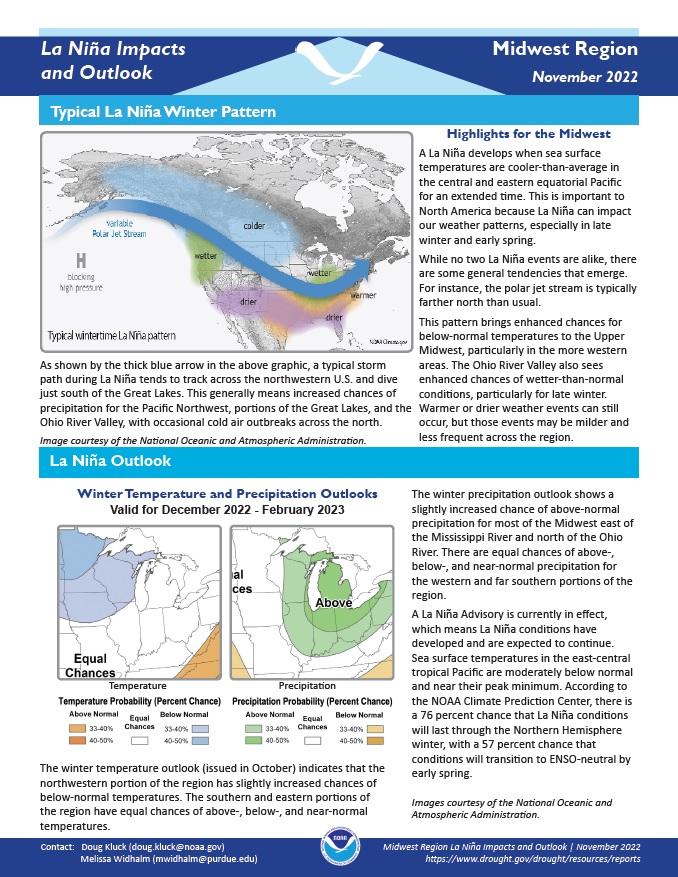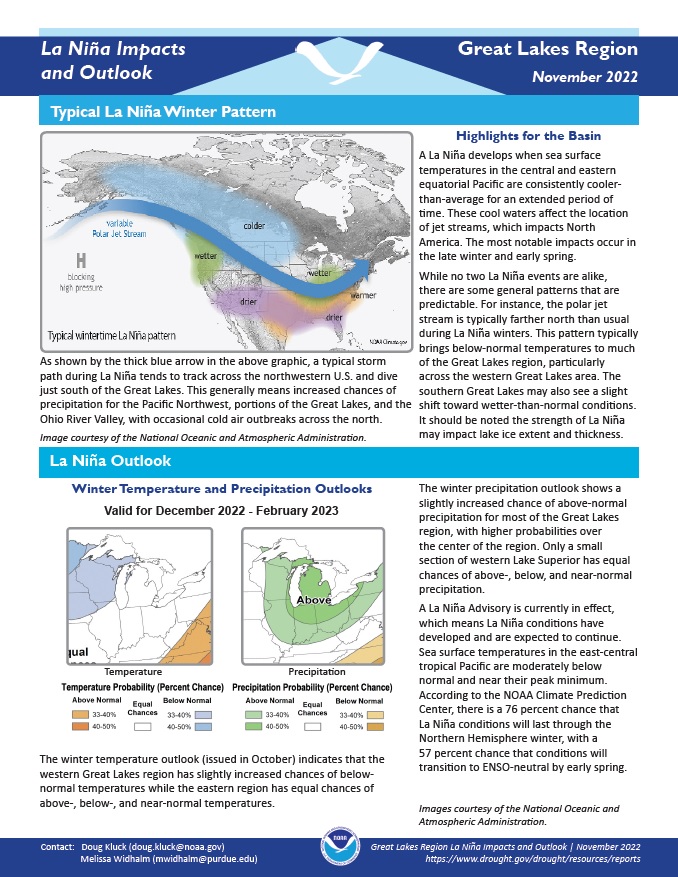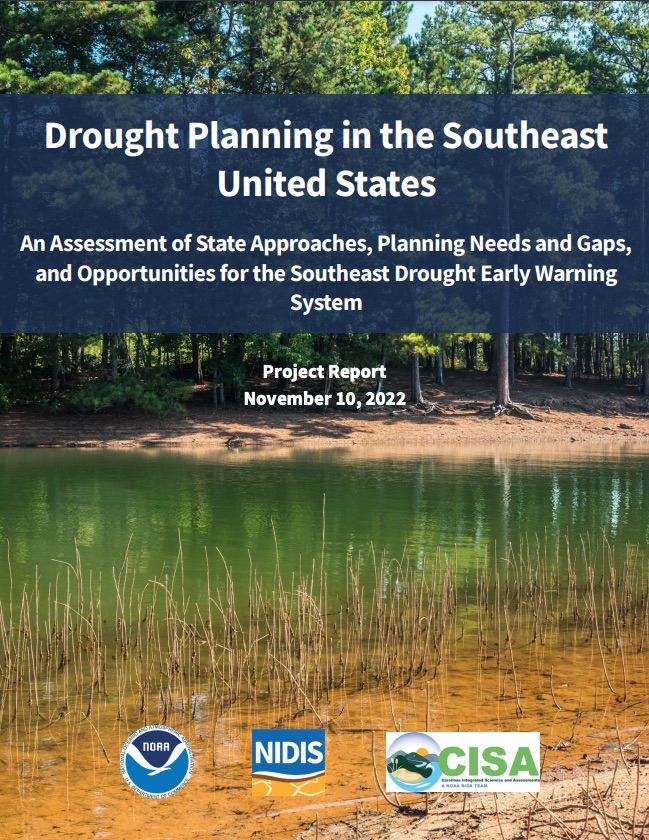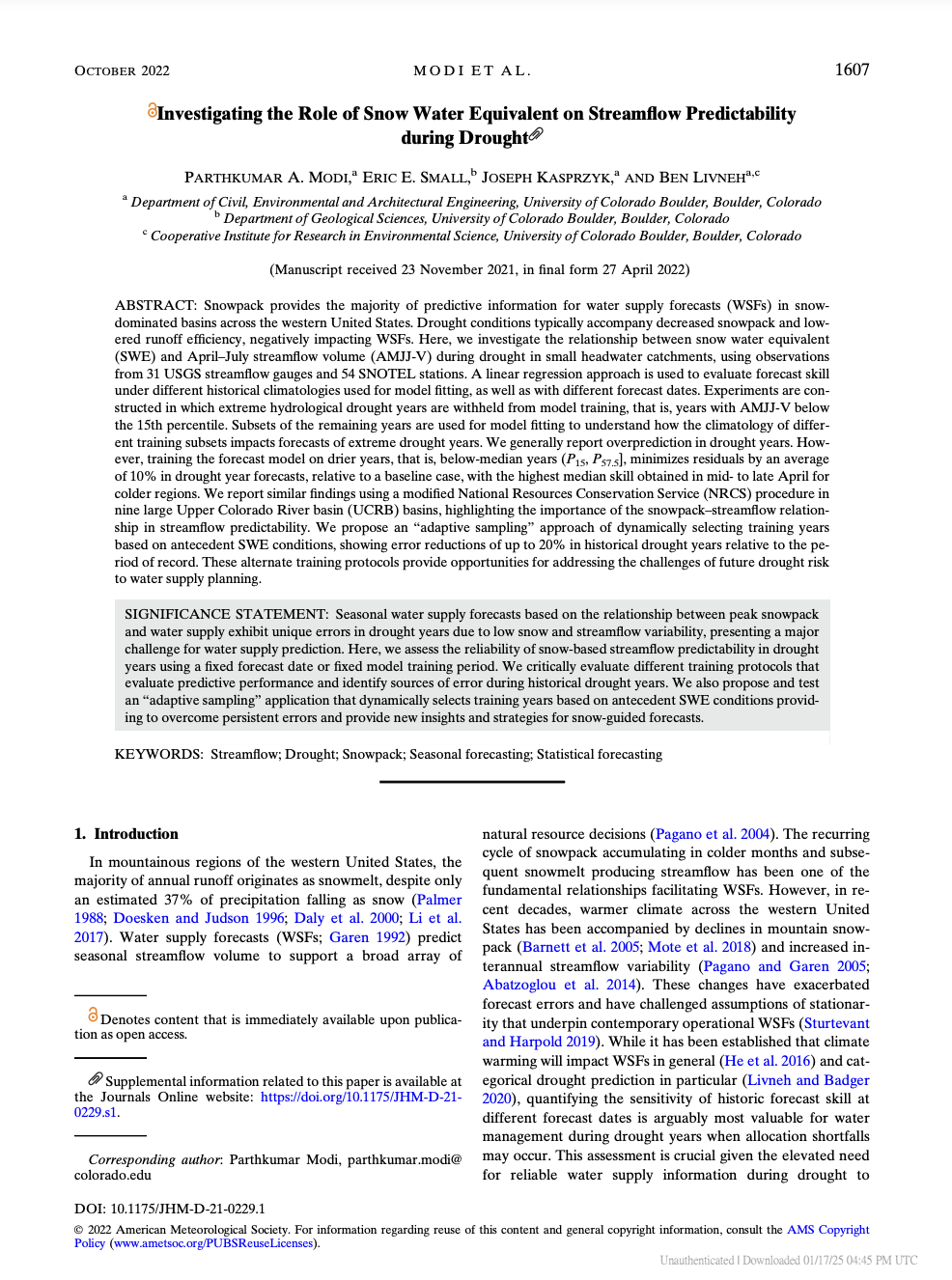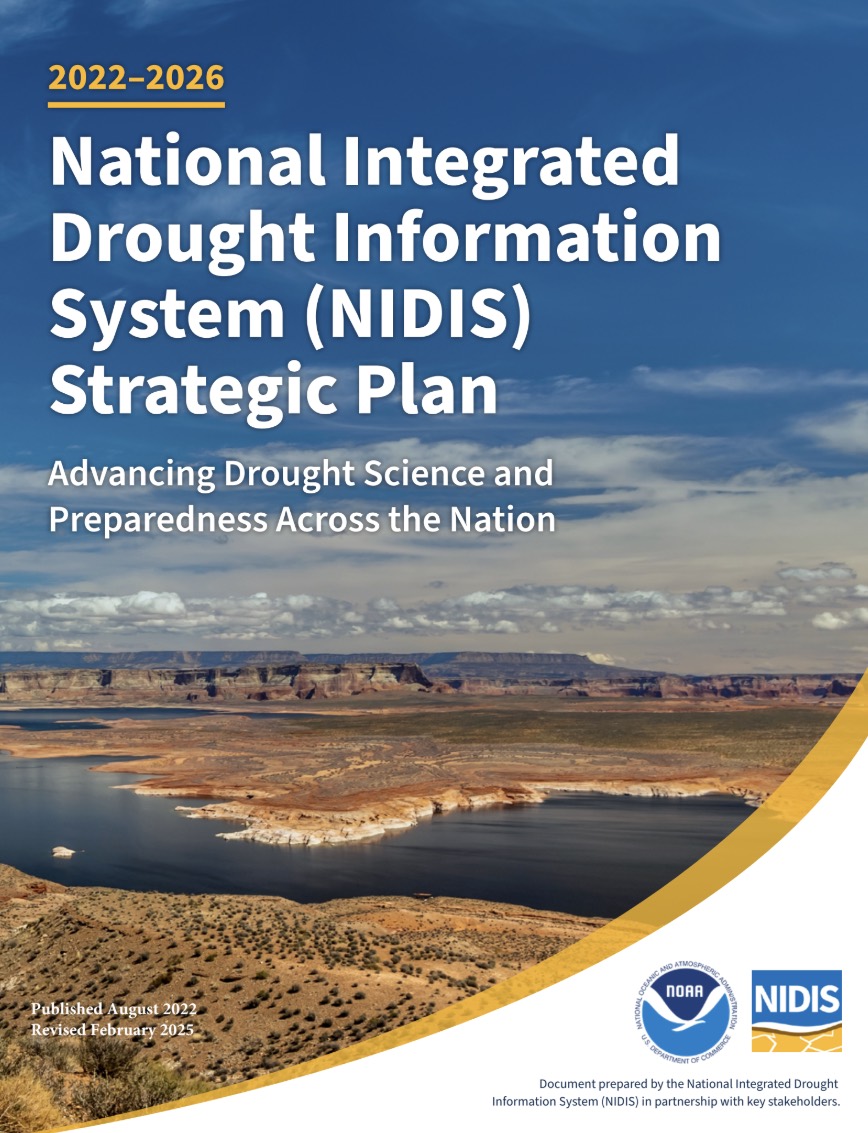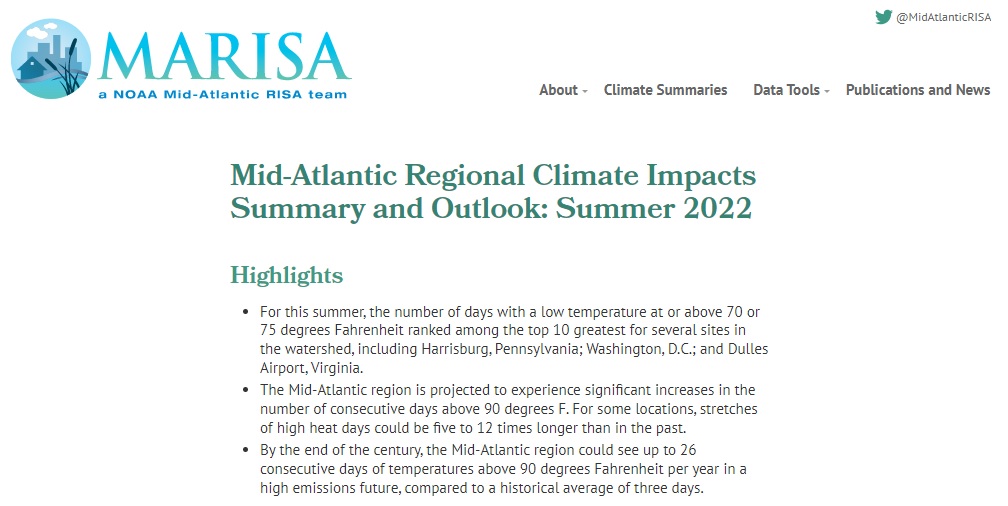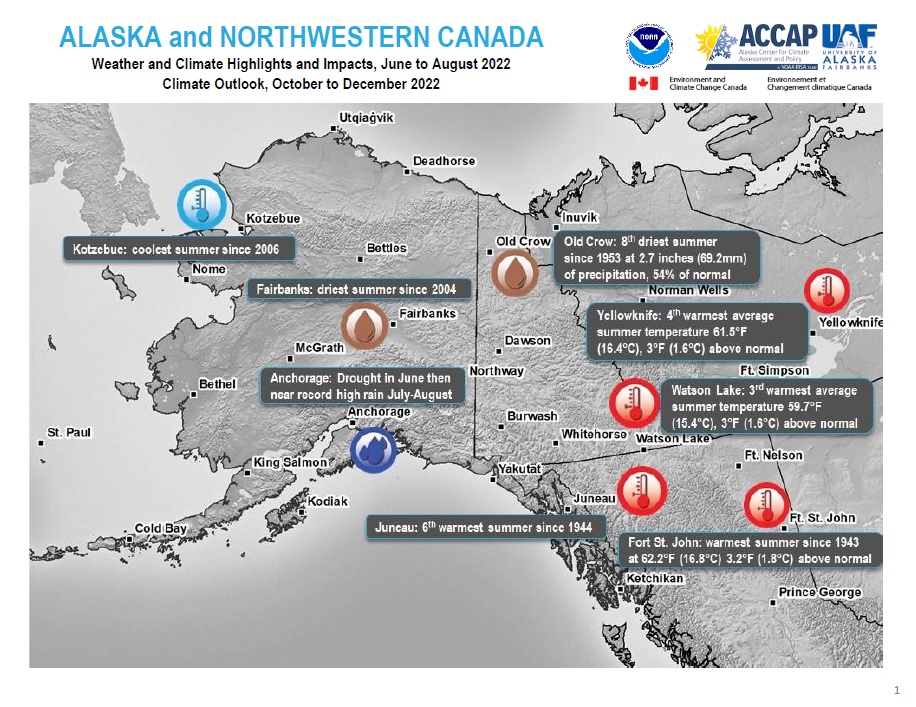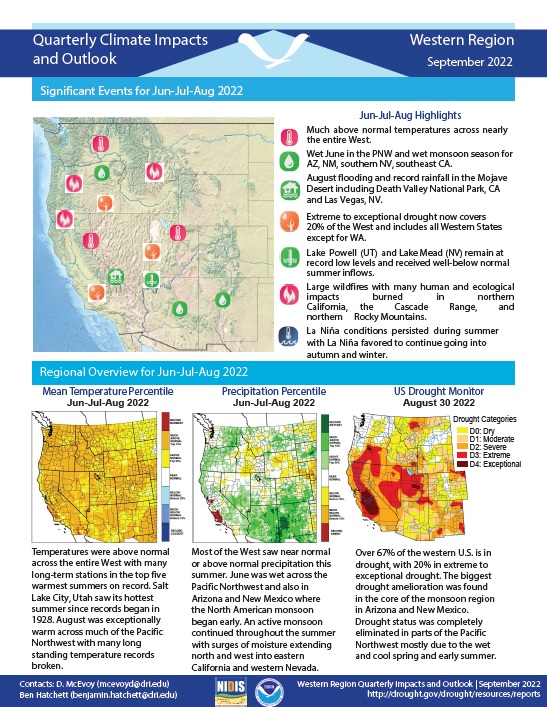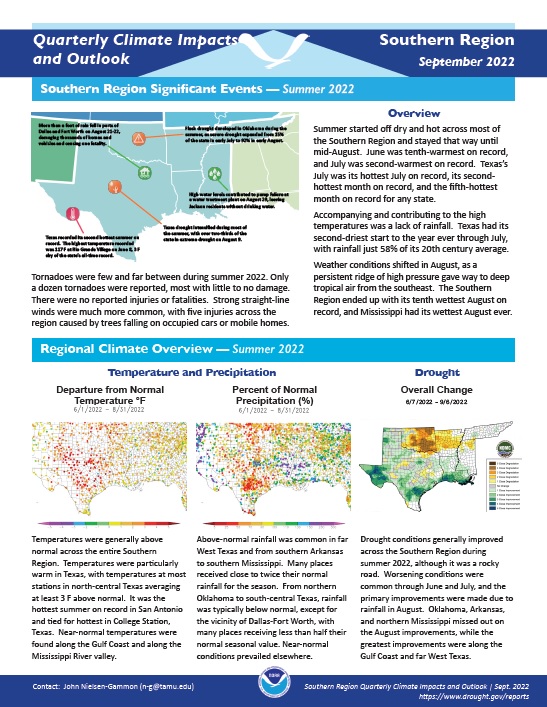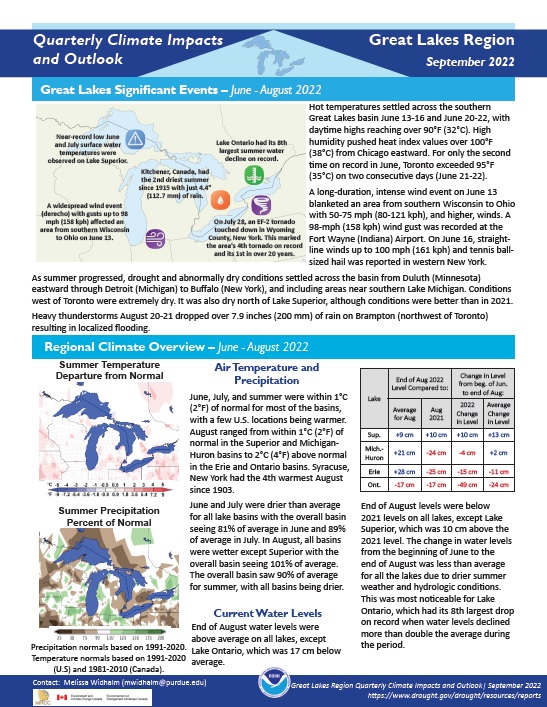For the latest forecasts and critical weather information, visit weather.gov.
This handout provides information on the typical La Niña winter pattern; the La Niña outlook; potential impacts; and comparisons of conditions during previous La Niña years for the Midwest U.S. Updated November 2022.
NOAA’s Regional Climate Services Program created these outlooks to inform the public about climate impacts within their respective regions. Each regional report contains easy-to-understand language, and anyone can access them through the Drought Portal.
This handout provides information on the typical La Niña winter pattern; the La Niña outlook; potential winter and spring impacts; and comparisons of conditions during previous La Niña years for the Great Lakes region. Updated November 2022.
NOAA’s Regional Climate Services Program created these Outlooks to inform the public about climate impacts within their respective regions. Each regional report contains easy-to-understand language, and anyone can access them through the Drought Portal.
Despite being a humid region, droughts pose a serious threat to the southeastern United States. Recent events, including flash droughts, have caused substantial impacts to agriculture, forestry, water resources, and other sectors and stakeholders. The drought planning literature cites reduced fragmentation and increased coordination as critical needs to improving drought preparedness and response.
This NIDIS-funded study, led by researchers at the University of Colorado Boulder/Cooperative Institute for Research in Environmental Sciences (CIRES), identified challenges in predicting seasonal water supply during drought years in snow-dominated basins of the western United States due to climate warming.
The 2022–2026 National Integrated Drought Information System (NIDIS) Strategic Plan outlines and advances NIDIS’s approach to building a national drought early warning system (DEWS).
Quarterly Climate Impacts and Outlook for the Mid-Atlantic Region for June–August 2022. Dated September 2022.
Almost all of the watershed experienced temperatures within two degrees of normal, with most experiencing temperatures 0–2 degrees above normal. A few locations along the coast of Virginia, southern Maryland, central Pennsylvania, and southern New York experienced temperatures between 2 and 3 degrees above normal.
Quarterly Climate Impacts and Outlook for Alaska and Northwestern Canada for June–August 2022, with an outlook for October–December 2022. Dated September 2022.
The early part of the summer saw record dry conditions that led to numerous and extensive wildfires. The second half of the summer saw excessive rainfall in many parts of the state. Most Yukon watersheds saw record snowpack in this past winter. This was followed by a colder than average spring, which signaled increased potential for flooding during the spring snowmelt season.
Quarterly Climate Impacts and Outlook for the Western Region for June–August 2022. Dated September 2022.
Temperatures were above normal across the entire West with many long-term stations in the top five warmest summers on record. Most of the West saw near-normal or above-normal precipitation this summer.
Quarterly Climate Impacts and Outlook for the Southern Region for June–August 2022. Dated September 2022.
Summer started off dry and hot across most of the Southern region and stayed that way until mid-August. Weather conditions shifted in August, as a persistent ridge of high pressure gave way to deep tropical air from the southeast.
Quarterly Climate Impacts and Outlook for the Great Lakes Region for June–August 2022. Dated September 2022.
June, July, and summer were within 1°C (2°F) of normal for most of the basins, with a few U.S. locations that were warmer. The overall basin saw 90% of average precipitation for summer, and all basins were drier than normal.


